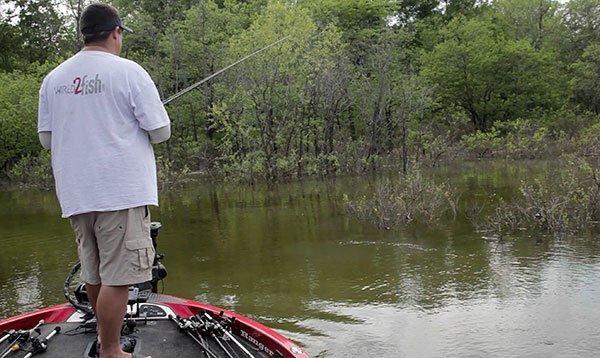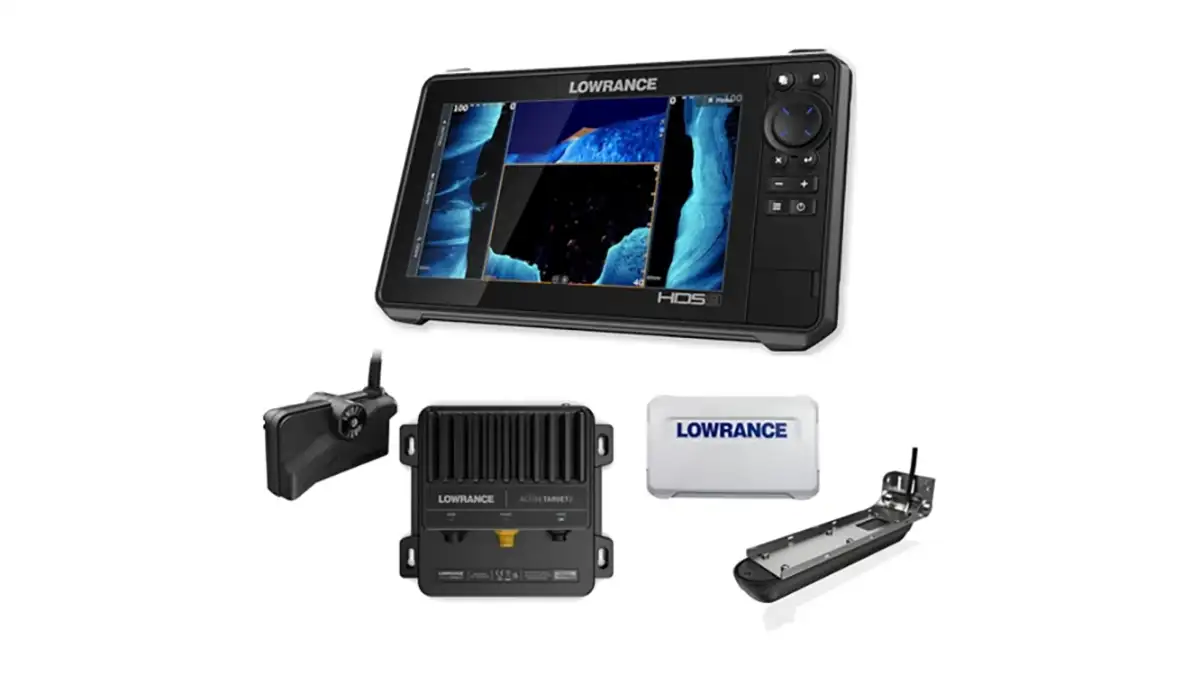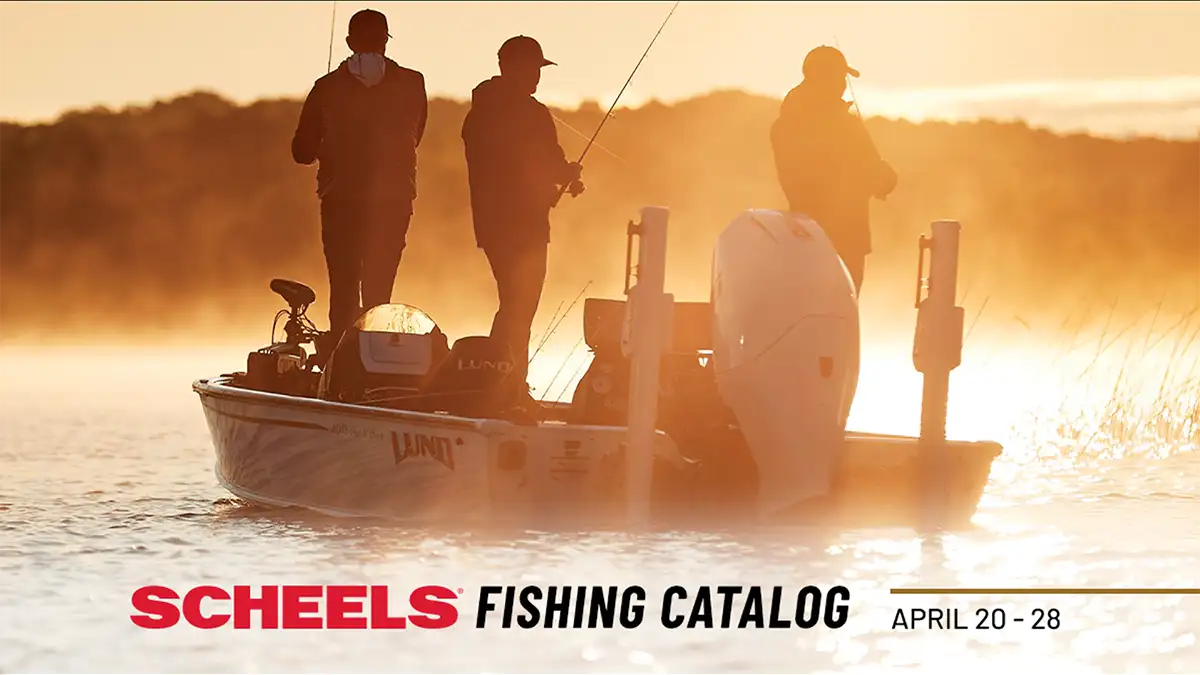It’s no mystery to me that some folks don’t like fishing with certain lures, like jigs, because they are not able to detect bites. It makes crankbaits and spinnerbaits and lures like that seem more productive to them because the bass have a way of hooking themselves on exposed hooks on constant moving lures. But developing your sense of feel and detecting bites while fishing is a key to being a good fishermen.
So what does it take to learn how to “feel a fish” on the other end of your line? Well in my opinion, it’s a conditioning thing and understanding what is potentially happening on the other end of the line.
So I backtracked on what helped me develop my sense of feel over 3 decades of bass fishing and fishing for saltwater and other freshwater fish. Here are 5 things to improve your sense of feel with a fishing rod:
- Weigh your lures
- Pause on questionable calls
- Watch the connection
- Learn with visible cover
- Unexpected tension
Know when your lure feels different
It sounds easy to know when your lure is doing something different. But it takes some time. The best way to learn when you’re getting a bite is to first no what your lure feels like the rest of the time. Simple enough. But most folks are paying attention to how fast they are reeling or how much they are moving their rod or maybe what is in the water.
When I pull a lure like a worm or a jig, or something that I must feel the bite on, through the water, I’m constantly “weighing my lure.” In other words, I am training myself as to how the lure feels all the time with nothing impacting it.
I recently fished with my brother-in-law on a farm pond. He said to me, “You have got to show me how you catch all these bass down here. I come here all the time and never catch anything.” So we fished that morning and I caught 5, and he finally caught 1 after some coaching. It dawned on me, he’s getting bites; he just doesn’t know it.
Knowing that I explained to him the different ways a bite changes how the lure feels. It might make it feel really light. It might make it feel “mushy”. It might feel heavier or you will actually feel the fish pecking on it. The thing is you have to know how the lure feels all the rest of the time and then anytime it starts to feel different you move to the next key point.
Sometimes a bite in cover just feels like the lure is stuck. If you’ve hopped it up and down or just pitched it in there, mostly likely it is in a fish’s mouth and not stuck in the cover.
Wait when in doubt
We feel something different on the other end of the line and our immediate reaction is to jerk back. Truth be told, there is a lot on the bottom of the lake. And everything that feels different may not be a bass. The nice thing with “contact lures,” or lures you drag along that contact the bottom, is usually a fish won’t spit them out immediately.
You have time to wait and watch your line, feel for something else to move on the other end while you’re sitting perfectly still. We often miss bites because we’re moving too much. We are bumping along the bottom, and in the middle of many bumps, a fish bumps the lure. We don’t immediately recognize it. But if you are in doubt, just pause and usually you will feel the fish do something.
I tell people all the time to pull a lure, reel up the slack and hold the lure still with a semi-taut line before moving it again. That’s to teach them to feel for a fish without moving the lure. Often a bite comes right after a movement as we pause to take up the slack. Awareness is key to developing your sense of feel. And you gain awareness by stopping, feeling and watching before moving again.
Be a line watcher
I’m still blown away by how many people are not line watchers when fishing. I can tell you a lot of the big fish I’ve caught, I didn’t immediately feel on the line. I saw the bite first. Often that is because I just hopped a lure and the bait is falling on slack line and I saw the “line jump.”
Keep in mind, you can see line movement with crankbaits, spinnerbaits, jerkbaits, etc. I often see my line do something before I perceive the bait has changed motion, weight or feel.
You’ve probably heard that term, but never knew what it meant. When a fish bites a lure on slack line, he will pull the bait a few inches quickly with a suck of water. That rapid suck of water snaps the limp line a bit tighter and there is a perceivable jump of the loose line on the surface. If you are fishing on somewhat tighter line when this happens you can feel the bite or actually feel the line snapping tight for a split second.
This can also help you develop feel. I’ve often noticed that a line jump bite actually feels like the lure got cut off. In other words it just feels way too light suddenly.
This will sound crazy, but I actually developed a much better sense of feel fishing for crappie on 1/16-ounce jigs and 4-pound line. It’s a great change of pace for me but more importantly it’s taught me to be aware of changes. After I do it for a few trips, I can tell you if it is a crappie, a bluegill or a yellow bass before I even set the hook just by how the bite felt. Most good crappie anglers will tell you the same.
What you can see will help you detect bites
So the other question we get asked a lot is how do you tell the difference between rocks, wood, grass and bass or other fish? Well the best answer is because I know what each of those things feels like on my lure. Not a great answer but it’s true.
The simple answer to this problem is to go fish where you can see into the water. Say you see a stump on a rocky bottom. Cast your lure up past the stump and slowly pull it up to the stump. Feel how it scrapes and momentarily snags on each pebble. Feel how it hangs for second on the root of the stump and you have to sort of pop it up to climb over it. Feel how it feels when it falls back over the stump and hits back on the rocks again.
Do the same thing with laydowns, and grass and such. You can teach yourself a lot about detecting bites by pulling the lure through cover you can see and knowing when you are pulling through rock, stumps, laydowns and grass. When you feel something different then what you just felt in that cover, it might be a fish.
Unexpected tension
When I’m flipping and pitching to cover, there is something I call unexpected tension that I think a lot of anglers really miss and often leads to their frustration with fishing worms and jigs in cover.
I’ve caught thousands of bass out of grass, bushes, brush piles and other shallow cover. As you pitch the lure to the cover, it should go to the bottom and then you should be able to move it. If a lure is rigged weedless or has a weed guard on it, it should not go into the cover on the initial pitch and get lodged. Now it will happen from time to time, but most of the time you’re able to move it.
Bass often bite on the initial fall of the lure, and you can just as often miss it if you’re not paying close attention to your line. But when you engage the reel and pick up slowly on the lure the first time, feel for tension, and if so, set the hook. You will find that 9 times out of 10 a fish grabbed your jig on the way down. When a fish is in cover, it often doesn’t feel the need to leave the security of that cover, so it won’t move at all. You will just have added tension.
I find this all the time when I flip bushes on Kentucky Lake. I will pitch into the heart of a bush. Then I will hop my lure up and down in the bush. One hop, two hop, three hop, four hop, and then it feels stuck. I ALWAYS set the hook. My lure came up and down through the cover 4 times fine and then miraculously got stuck? Nope. Something grabbed a hold of it. That unexpected tension again was something different than how my lure felt prior to that.
If you will spend the first several casts with your jig or Texas-rigged worm weighing it and feeling how it bumps over the cover without getting a bite, you’ll be much better prepared to detect when something changes. And that is how you will detect more bites when fishing.
For more information on bass fishing, see our How to Bass Fish Guide, When to Bass Fish Guide and Where to Bass Fish Guide.












